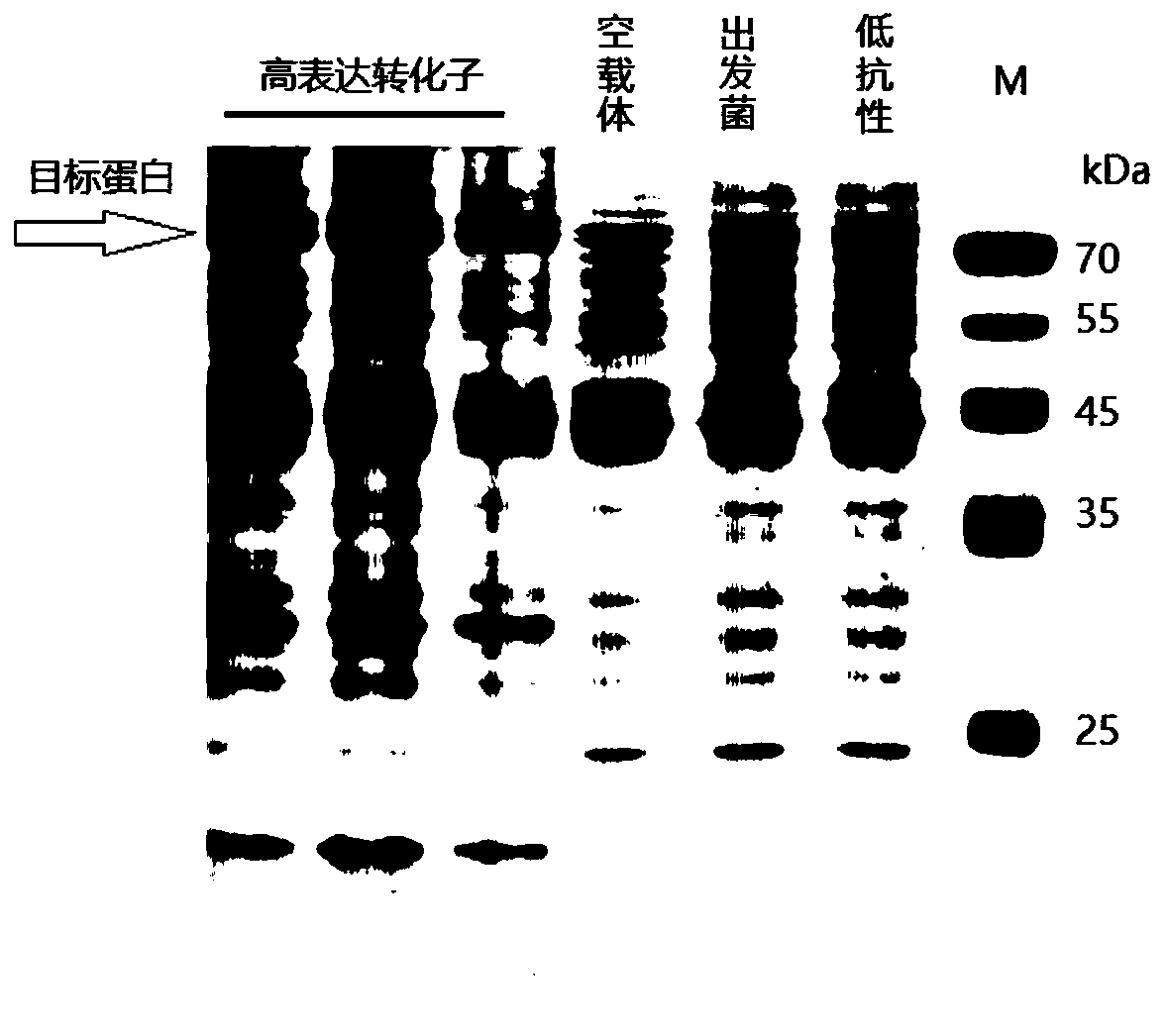Cellulose excision enzyme artificial synthesis gene and protein and recombinant vector thereof
A recombinant vector, artificial synthesis technology, applied in the direction of vector, nucleic acid vector, genetic engineering, etc., can solve the problems of low recovery rate and troublesome purification steps, and achieve the effect of preventing degradation, realizing mass production, and maintaining natural activity.
- Summary
- Abstract
- Description
- Claims
- Application Information
AI Technical Summary
Problems solved by technology
Method used
Image
Examples
Embodiment 1
[0060] This example provides an optimized artificially synthesized exocellulase gene with a 6×His tag at the C-terminal, the specific sequence of which is shown in SEQ ID No.1 in the sequence listing, and the protein corresponding to the gene The sequence is shown as SEQ ID No.2 in the sequence listing. The optimized DNA sequences were compared by NCBI, and there was no obvious similarity.
[0061] The methanolic yeast expression system is the most widely used yeast expression system, and the exogenous gene expression system using Pichia pastoris (Pichia Pasteur yeast) as the host has developed the most rapidly in recent years and is also the most widely used. Yeast is a single-cell lower eukaryote. Compared with insect expression system and mammalian expression system, yeast expression system has the advantages of both. At the same time, yeast expression system has the characteristics of simple operation, low cost, and large-scale fermentation. Therefore, it is an ideal prep...
Embodiment 2
[0064] This embodiment provides a method for preparing exocellulase protein, which specifically includes the following steps:
[0065] S1: Construction of expression vector and transformation: The sequence characteristics of the gene itself in Example 1 and the DNA sequence synthesized by yeast codon preference, that is, the DNA in SEQ ID No.1, were connected to the Pichia pastoris inducible secretory expression vector pPICZαA to obtain The recombinant vector pPICZαA-exocellulase, the vector construction is as follows figure 1 as shown, figure 1 It is a schematic diagram of the construction of the eukaryotic expression vector pPICZαA-exocellulase in the embodiment of the present invention. The main vector construction steps are preferably as follows:
[0066] (1) Use Xho I and Xba I to double digest the artificially synthesized plasmid containing the synthetic cellulase gene to obtain the target fragment. The reaction system is as follows (the exonuclease and buffer used are...
Embodiment 3
[0103] In this embodiment, the enzyme activity of the purified exocellulase is detected, and the specific steps and results are as follows:
[0104] The present invention uses the glucose hexokinase (HK) method to measure the ability of exocellulose to hydrolyze carboxymethylcellulose sodium (CMC-Na) to produce glucose, and hexokinase catalyzes the glucose (D-Glucose) to make It is phosphorylated to generate glucose-6 phosphate (G-6-P), G-6-P and coenzyme NAD generate NADH and 6-phosphogluconic acid under the action of glucose-6-phosphate dehydrogenase, which can be measured by spectrophotometry Measure the absorbance change of NADH at 340nm wavelength, and quantitatively detect the concentration of glucose in the sample. The specific steps and results are as follows: add 2 μl of purified exocellulase with a concentration of 1 mg / mL to 98 μl of CMC-Na containing 1% Sodium dihydrogen phosphate and citric acid buffer solution (pH=4), react at 40°C for 1 hour; take 10 μl and 2 μl...
PUM
| Property | Measurement | Unit |
|---|---|---|
| recovery rate | aaaaa | aaaaa |
Abstract
Description
Claims
Application Information
 Login to View More
Login to View More - R&D
- Intellectual Property
- Life Sciences
- Materials
- Tech Scout
- Unparalleled Data Quality
- Higher Quality Content
- 60% Fewer Hallucinations
Browse by: Latest US Patents, China's latest patents, Technical Efficacy Thesaurus, Application Domain, Technology Topic, Popular Technical Reports.
© 2025 PatSnap. All rights reserved.Legal|Privacy policy|Modern Slavery Act Transparency Statement|Sitemap|About US| Contact US: help@patsnap.com



